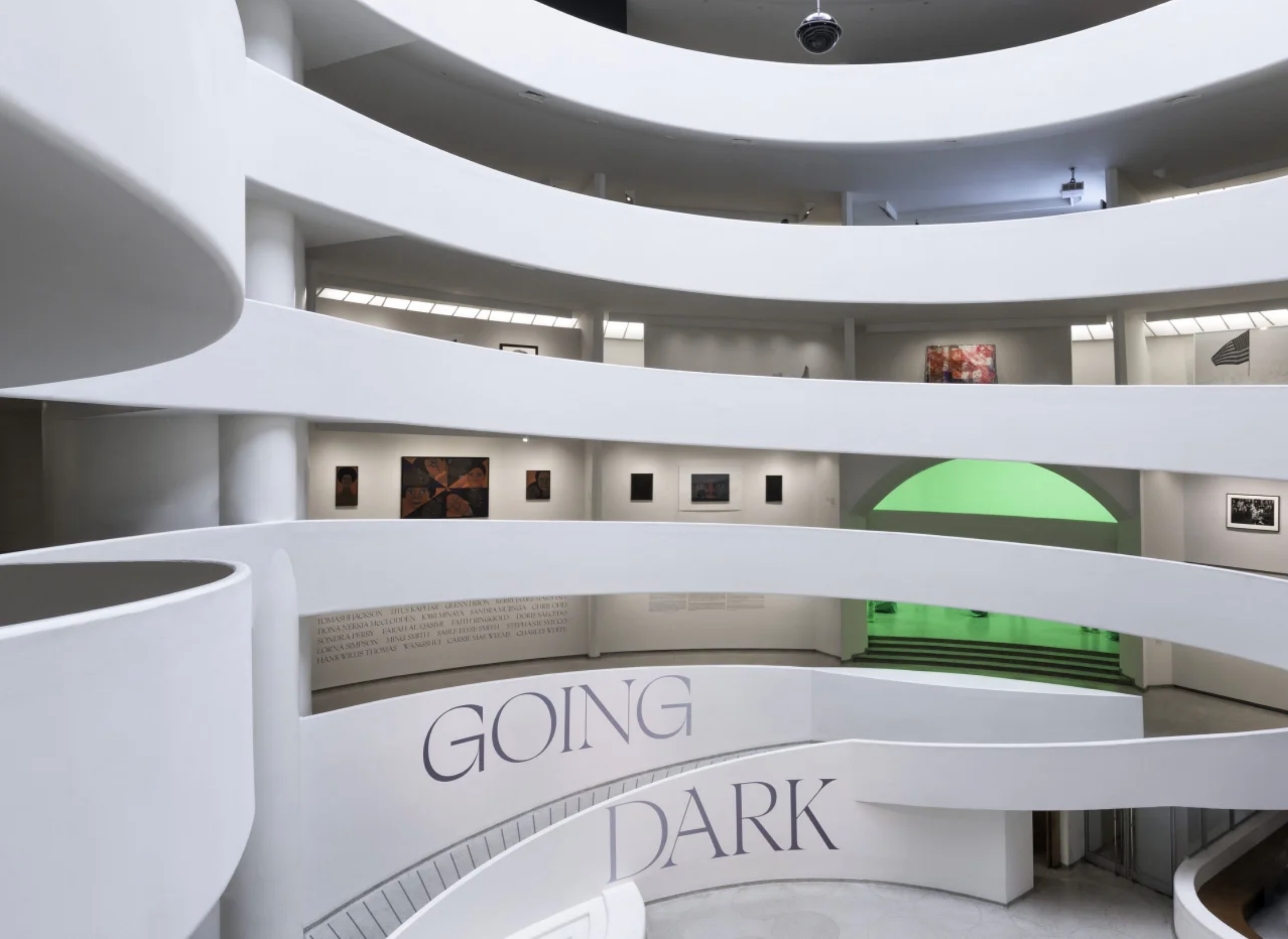Opening on October 20, American Artist will participate in "Going Dark: The Contemporary Figure at the Edge of Visibility" at the Guggenheim Museum in New York, a group show that features partially obscured or hidden figures from more than 100 artworks from 28 artists, positioning them at the "edge of visibility."
In “Security Theater”, American Artist marks the formal similarities between the Guggenheim Museum, designed by Frank Lloyd Wright, and philosopher Jeremy Bentham's late-eighteenth-century concept of the panopticon, an idealized structure for prison surveillance and productivity. It is defined, like Wright's building, by a cylindrical, multi- level form with individual bays along the perimeter that are viewable from a central point. This installation thus correlates the Guggenheim's high-brow, midcentury aesthetics with the omnipresence of carceral architectures and protocols, which can be observed across public sites, including schools, libraries, universities, airports, and even museums. The artist suggests that the overabundance of these carceral technologies-360-degree surveillance, CCTV, turnstiles, and security guards - reflects their infiltration into and normalization within everyday life in the United States.
While engaging with the installation, visitors are invited to both be observed and to observe others, an intervention that makes a theater of watching. The massive orb hanging from the oculus at the center of the museum draws attention to itself conspicuously, mimicking the exaggerated tactics of security firms such as the U.S. Transportation Security Administration, whose practices tend to promote a culture of intimidation before offering utility or safety.
